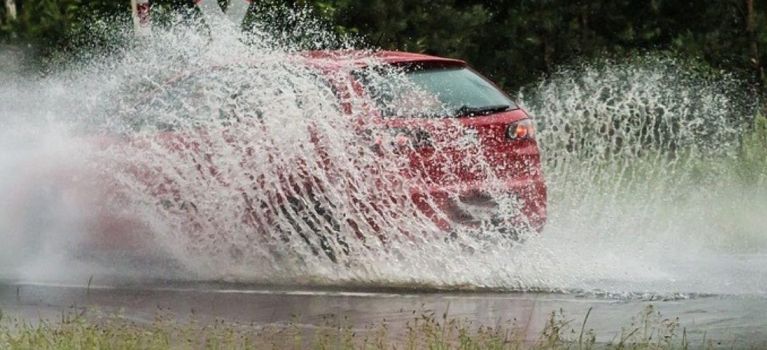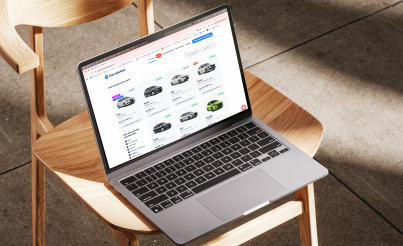If it rains a lot and the road is wet, you have to drive carefully. Because there is a danger of aquaplaning. In the worst case, your car tyres lose traction. Your car will then slide along on the water film and you will hardly be able to steer it. Learn on the blog how such a situation can occur and how to react correctly.
Aquaplaning - what are the causes?
- Wet road
The word aquaplaning is derived from aqua, meaning "water", and planing, meaning "to slide", and occurs when a large amount of water collects on the road. The more water there is, the higher the risk that the wheels will lose grip with the ground. This is because the water accumulates in front of the wheels and the car can lift off completely at a certain point. You can then almost no longer steer or brake your car.
- Worn tyres
If the road is wet and your tyres have a worn tread, aquaplaning can occur even with little precipitation. This is because a good tread pattern ensures that water on the road drains off to the side. A tread depth of 4 mm or more increases safety in precipitation. Pay particular attention to the tread depth of your rear tyres, as they are mainly responsible for preventing your car from skidding.
- Tyre width
Your tyres should not be too wide, as they will then not be able to dissipate the water to the side in the best possible way. Tyre pressure also plays an important role. If the pressure is too low, your tyres will end up being wider.
Aquaplaning prevention
To minimise the risk of aquaplaning, there are several things you should do.
- Check your car and tyres regularly
In general, you should check your tyres regularly, including tyre pressure. The correct air pressure is usually indicated on the edge of the door, on the fuel filler cap, by the glove compartment or on the door frame. The rear tyres should also have more tread than the front tyres.
- Driving with foresight
In heavy rain and on wet roads, you should drive. Your braking distance is about three times longer on a wet road than on a dry one. You should also keep a safe distance from the car in front, especially on winding roads. This makes aquaplaning even more difficult to control.
Watch out for these 6 things
There are a number of alarms that can alert you to aquaplaning. These include
- Noticeable change in steering
- Water noises under your car
- Engine roar
- Increase in engine speed
- The ESP indicator light flashing
- Reduced braking efficiency
- How to react correctly
If you are in a situation of aquaplaning, it is important to keep a cool head. Avoid making hectic movements or steering. Keep your hands on the steering wheel at all times. Do not operate the accelerator or the brake, simply depress the clutch fully; if you drive an automatic, set it to "N" (neutral). This will allow your car to continue without accelerating. Activate your hazard lights during the process so that other drivers are made aware of you and the aquaplaning.
Conclusion
Aquaplaning is mainly caused by extremely wet roads and poor tyre tread or underinflated tyres. If you always keep an eye on the tyre tread and also the tyre pressure, drive carefully and in a controlled manner in heavy rain, it already minimises the risk of aquaplaning occurring. If it does occur, keep a cool head and keep your hands on the wheel. If you drive your new car with the Carvolution car subscription, your tyres will always be in very good condition.
Car with all-inclusive subscription
Insurance, registration, taxes, and more – everything included. Around 40 models from various brands.










